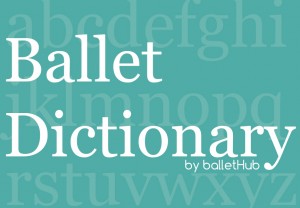Fouetté turns is a classical ballet term meaning “whipped turns.” A fouetté turn is when a dancer, usually female, does a full turn in passe (pirouette), followed by a plie on the standing leg while the retiré leg extends to croise front and rond de jambes to the side (a la seconde). As the leg hits the a la second and still in plie, the dancer releves and brings the leg into retiré and begins a turn again.
They are often in context referred to simply as “fouettés.” For example, in conversation, a teacher may ask a dancer to “try the fouettés in the coda again.” It is generally understood that the teacher is asking for the series of fouetté turns that is typical for a ballerina to perform, often to 32, in a coda from a pas de deux.
The ballet term fouetté literally means “whipping,” and when you watch a fouetté turn, it is easy to understand why it has this name, as the dancer’s leg in the air looks like it is being whipped out and in. The actual correct classical ballet term for a fouetté turn is “fouetté rond de jambe en tournant.”
A double fouetté turn simple means a double turn before each single extension and rond de jambe, not a double whip of the leg.
